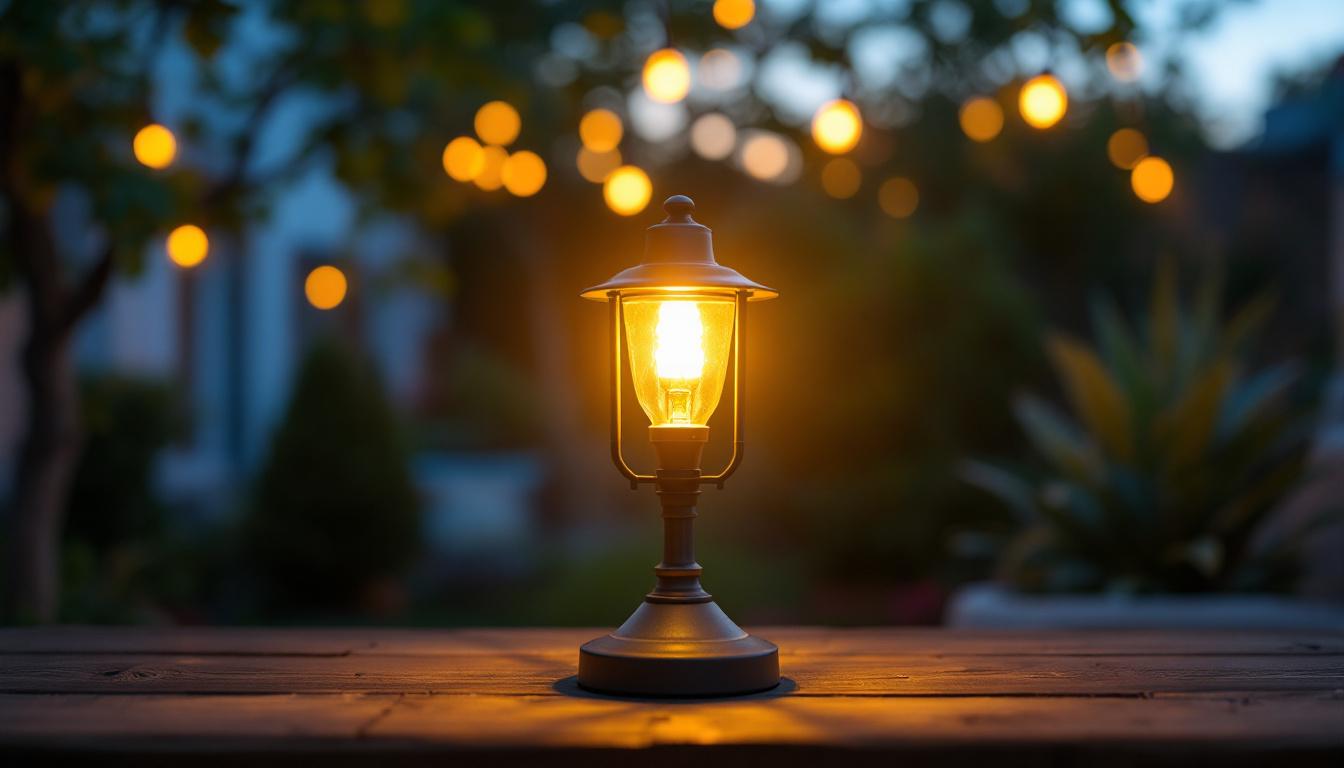
In the world of lighting, understanding the relationship between lumens and watts is crucial for lighting contractors. As the demand for energy-efficient lighting solutions continues to grow, professionals in this field must navigate various challenges to deliver optimal results for their clients. This article delves into the conversion of 1500 lumens to watts, exploring the implications for lighting contractors and offering strategies to overcome common obstacles.
Before diving into the conversion process, it is essential to understand the fundamental differences between lumens and watts. Lumens measure the amount of visible light emitted by a source, while watts quantify the energy consumed by that source. With the advent of energy-efficient lighting technologies, such as LED and CFL bulbs, the relationship between these two metrics has evolved significantly.
Lumens are a direct reflection of how bright a light source appears to the human eye. For instance, a standard 60-watt incandescent bulb typically produces around 800 lumens. In contrast, an LED bulb can produce the same amount of light while consuming only 10-12 watts. This discrepancy illustrates the importance of lumens in evaluating lighting performance, especially when selecting fixtures for various applications. Furthermore, the perception of brightness can also be influenced by the color temperature of the light, measured in Kelvin. Warmer light (around 2700K) tends to create a cozy atmosphere, making it ideal for living spaces, while cooler light (above 5000K) is often preferred in work environments for its clarity and focus-enhancing properties.
Watts, on the other hand, indicate the energy consumption of a light source. In traditional incandescent lighting, higher wattage often correlated with increased brightness. However, modern lighting technologies have disrupted this relationship, leading to confusion among consumers and contractors alike. Understanding the wattage requirements of different lighting types is essential for ensuring energy efficiency and cost-effectiveness in projects. For example, while a 100-watt incandescent bulb may have been the go-to choice for bright lighting in the past, a comparable LED bulb only requires about 14-16 watts to achieve the same light output. This shift not only reduces energy bills but also decreases the frequency of bulb replacements, contributing to a more sustainable approach to lighting. Additionally, as more people become aware of their environmental impact, the demand for low-wattage, high-lumen options continues to rise, prompting manufacturers to innovate and improve their offerings.
To convert lumens to watts, one must consider the type of light source being used. Different technologies have varying efficiencies, which directly affect the wattage required to produce a specific lumen output. For example, while an incandescent bulb may require approximately 100 watts to produce 1600 lumens, an LED bulb can achieve the same brightness with only 15-20 watts.
The formula for converting lumens to watts is not straightforward due to the differing efficiencies of light sources. However, a general rule of thumb can be applied. For LED lighting, a rough estimate is that 1 watt produces about 80-100 lumens. Therefore, to achieve 1500 lumens, one would typically need around 15-20 watts of LED lighting. In contrast, for traditional incandescent bulbs, the wattage requirement would be significantly higher, around 100 watts.
Several factors can influence the efficiency of light sources, including the quality of the bulb, the design of the fixture, and the specific application. For instance, some LED bulbs are designed for specific tasks, such as task lighting or ambient lighting, which can affect their lumen output and wattage requirements. Additionally, the placement and orientation of fixtures can impact perceived brightness, making it essential for contractors to consider these variables when planning installations.
Moreover, the color temperature of the light source can also play a crucial role in how brightness is perceived. Light sources with a higher color temperature, often referred to as “cool white” or “daylight,” can appear brighter than their warmer counterparts, even when they emit the same number of lumens. This phenomenon can lead to a preference for certain types of lighting in specific environments, such as offices or retail spaces, where clarity and visibility are paramount. Understanding these nuances can help consumers and professionals alike make informed decisions about lighting choices that best suit their needs.
Furthermore, energy efficiency ratings, such as the Energy Star label, can guide consumers in selecting lighting products that not only meet their brightness requirements but also minimize energy consumption. These ratings often indicate that a product meets strict efficiency guidelines set by the Environmental Protection Agency, ensuring that users can enjoy significant savings on their electricity bills over time. As technology continues to evolve, the market is seeing a growing variety of lighting options, including smart bulbs that allow for customizable brightness and color settings, further enhancing the user experience while maintaining energy efficiency.
Lighting contractors often encounter a range of challenges when converting lumens to watts and selecting appropriate fixtures for their projects. Understanding these challenges is the first step toward finding effective solutions.
One of the primary challenges faced by lighting contractors is educating clients about the differences between lumens and watts. Many consumers still associate higher wattage with greater brightness, leading to misconceptions about energy-efficient lighting options. Contractors must take the time to explain these concepts clearly, helping clients make informed decisions about their lighting choices.
Another challenge is the vast array of lighting products available on the market. With numerous manufacturers and models, selecting the right fixtures can be overwhelming. Contractors must stay informed about the latest technologies and trends to recommend the best options for their clients. This includes understanding the lumen output and wattage of various products, as well as their suitability for specific applications.
To navigate the complexities of converting lumens to watts and selecting appropriate lighting solutions, contractors can implement several effective strategies.
Ongoing education and training are essential for lighting contractors to stay current with industry advancements. Investing in workshops, seminars, and online courses can enhance knowledge about lumens, watts, and energy-efficient lighting technologies. Additionally, utilizing resources such as lighting design software can aid in making informed decisions and providing accurate recommendations to clients.
Leveraging technology can streamline the process of converting lumens to watts. Various online calculators and software tools are available to assist contractors in determining the appropriate wattage for specific lumen outputs. These tools can save time and reduce the risk of errors, ensuring that contractors provide accurate information to clients.
Examining real-world examples can provide valuable insights into how lighting contractors have successfully navigated the challenges of converting lumens to watts. These case studies highlight effective strategies and innovative solutions that can inspire other professionals in the field.
In a recent residential lighting renovation project, a contractor faced the challenge of upgrading outdated incandescent fixtures while meeting the client’s desire for energy efficiency. By conducting a thorough assessment of the home’s lighting needs, the contractor determined that the client required approximately 1500 lumens for key living areas. After educating the client on the benefits of LED technology, the contractor recommended LED fixtures that provided the desired lumen output while consuming only 15 watts each. The result was a significant reduction in energy costs and improved lighting quality.
Another case involved a commercial office space looking to enhance its lighting while reducing energy consumption. The contractor was tasked with replacing existing fluorescent fixtures with modern LED alternatives. By calculating the required lumen output for each workspace, the contractor identified that a total of 1500 lumens was necessary for each desk area. By selecting LED fixtures with an efficiency of 100 lumens per watt, the contractor successfully delivered a solution that provided adequate brightness while drastically lowering the overall wattage used in the office.
As the lighting industry continues to evolve, several trends are shaping the future of lighting technology. Staying informed about these trends can help contractors remain competitive and provide cutting-edge solutions to their clients.
One of the most significant trends in lighting technology is the rise of smart lighting solutions. These systems allow users to control their lighting remotely, adjust brightness levels, and even change color temperatures. As smart lighting becomes more accessible, contractors will need to familiarize themselves with these technologies to offer clients innovative and customizable lighting options.
Another trend is the growing emphasis on sustainability in lighting design. With a heightened awareness of environmental issues, clients are increasingly seeking energy-efficient solutions that reduce their carbon footprint. Contractors who prioritize sustainable practices and materials will be well-positioned to meet this demand and contribute to a greener future.
Understanding the conversion of 1500 lumens to watts is essential for lighting contractors navigating the complexities of modern lighting solutions. By educating clients, staying informed about product availability, and implementing effective strategies, contractors can overcome the challenges they face in this dynamic industry. As technology continues to advance, embracing new trends and innovations will be crucial for delivering exceptional lighting solutions that meet the needs of clients while promoting energy efficiency and sustainability.
Ready to elevate your lighting game? Look no further than LumenWholesale for all your lighting needs. Our extensive selection of spec-grade lighting products ensures you can tackle any challenge with confidence, knowing you’re backed by quality, affordability, and convenience. Say goodbye to local distributor markups and hello to unbeatable wholesale prices, free shipping, and the reliability your projects deserve. Don’t compromise on excellence—choose LumenWholesale for Wholesale Lighting at the Best Value and light up your client’s world with ease.

Discover the essential guide to outdoor lamps tailored for lighting contractors.

Discover why lighting contractors should prioritize LED factory installations with these five compelling reasons.

Explore the advantages and challenges of lumen brightness in lighting projects.

Discover expert insights on overcoming common challenges in installing exterior ceiling porch lights.